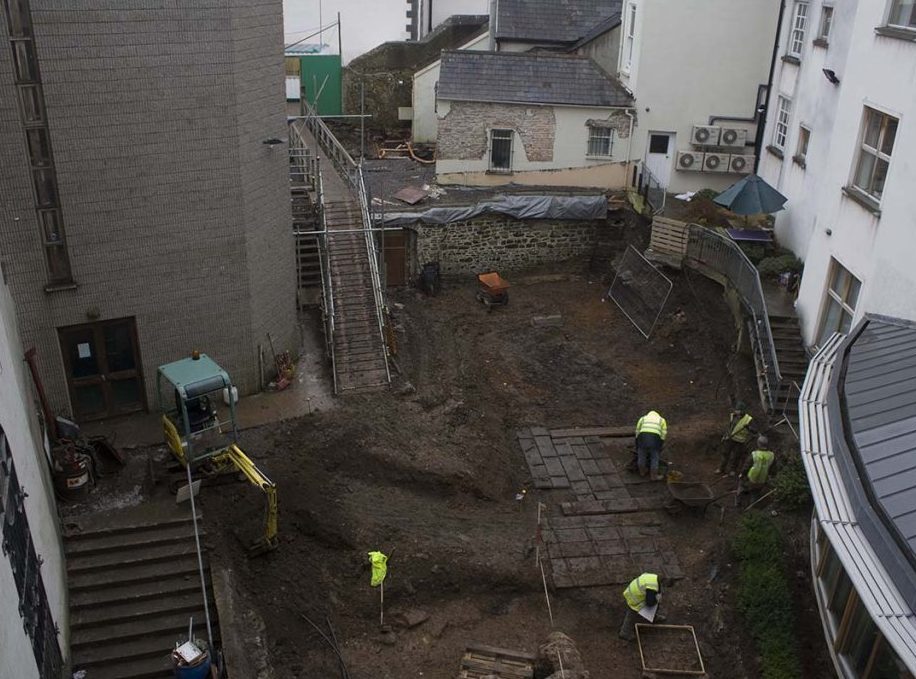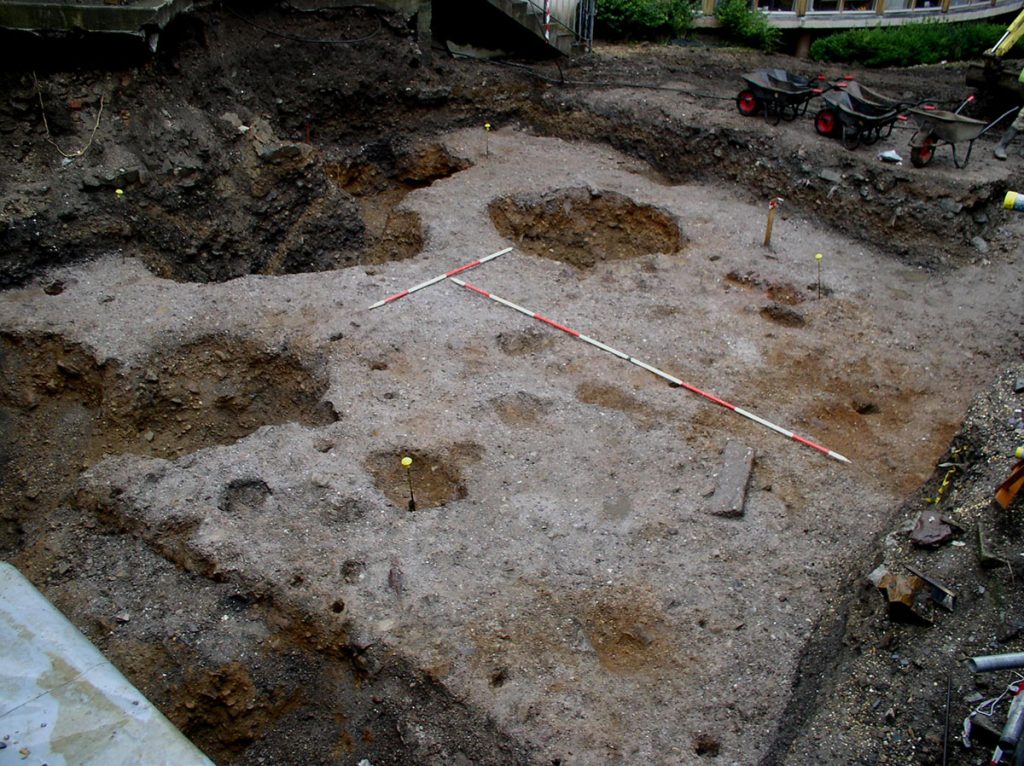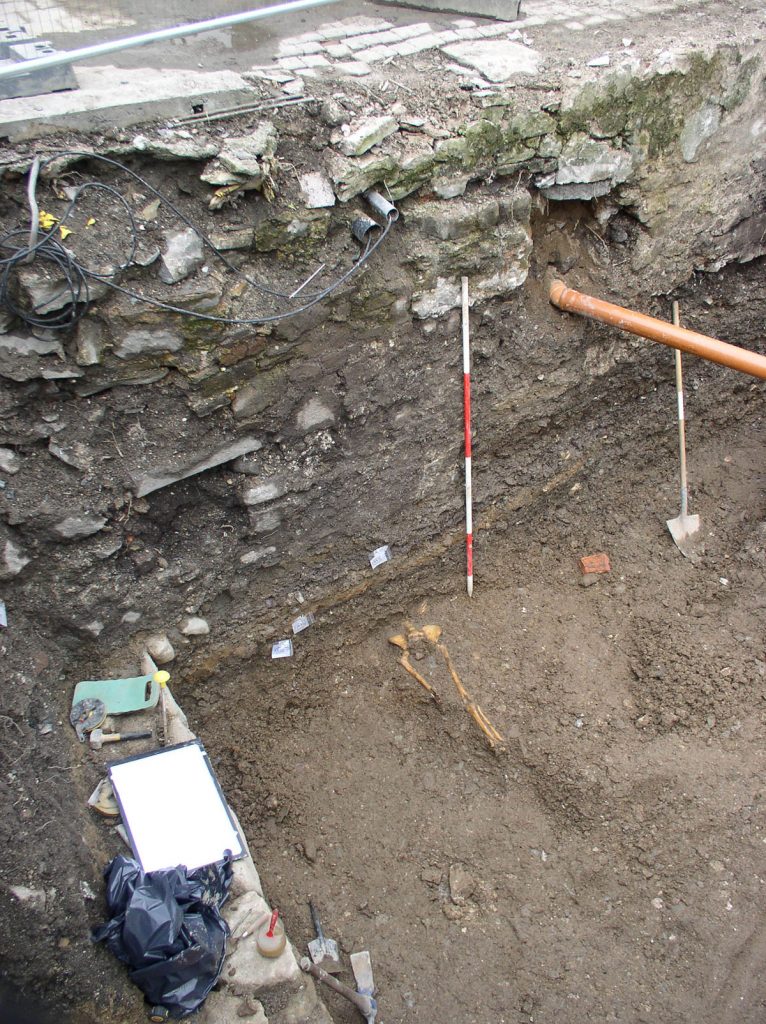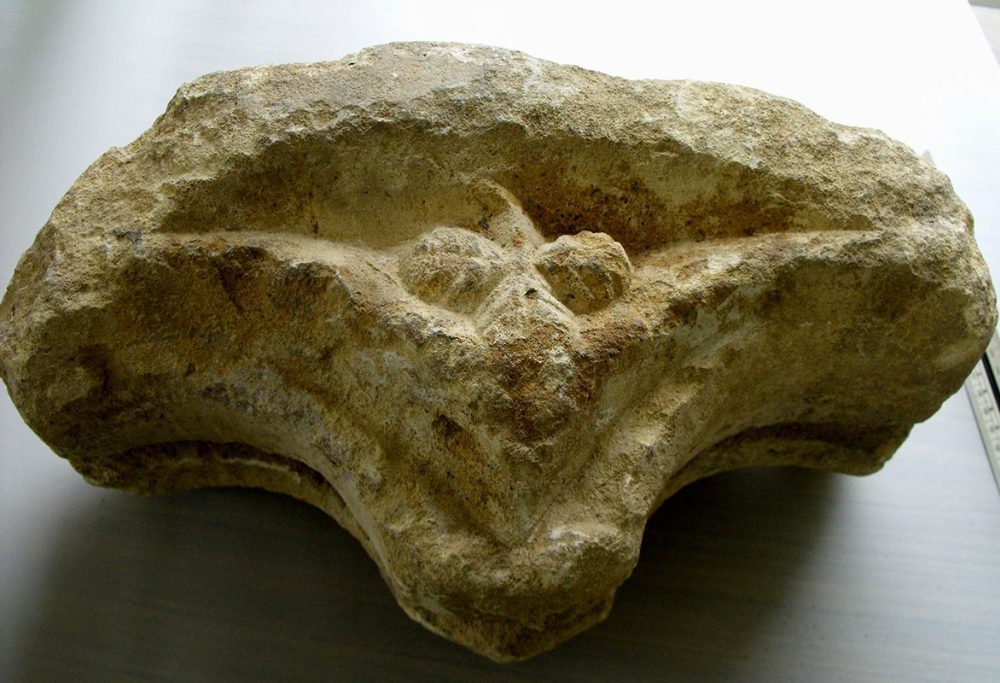Excavation of Viking and late medieval levels on the site of Waterford Medieval Museum in conjunction with Orla Scully (on behalf of Waterford City Council).
The museum incorporated an upstanding thirteenth century building (Chorister’s Hall). The site presented several challenges for removing spoil and maintaining access and services into surrounding buildings.
Early Viking period settlement evidence was sealed beneath a 10th century black soil containing copper alloy artefacts (notably a finely decorated strap end), a ring pin, stick pins, lead weights, iron nails, an iron arrowhead and bone comb fragments. Viking age deposits were later partially buried beneath a clay bank that preceded the construction of the town wall.
Following the arrival of the Anglo-Normans in the late 12th century, large refuse pits where dug within the site and filled with food waste and debris. There was evidence for industrial activity and human burial. One burial had been cut in half by the foundation trench for Chorister’s Hall. Fragments of 13th century and line impressed floor tiles were abundant. Evidence for a second large medieval structure was also uncovered to the east of Chorister’s Hall.

 Aerial view of the site following topsoil removal.
Aerial view of the site following topsoil removal. Deanary Gardens excavation on west of Chorister’s Hall.
Deanary Gardens excavation on west of Chorister’s Hall. Earliest layer on site, the original sod layer cut by Viking and Anglo-Norman features.
Earliest layer on site, the original sod layer cut by Viking and Anglo-Norman features. Tenth century AD copper alloy ringed pin.
Tenth century AD copper alloy ringed pin. Burial associated with Christchurch Cathedral.
Burial associated with Christchurch Cathedral. Selection of line impressed tiles.
Selection of line impressed tiles. Rotary grindstone.
Rotary grindstone. Carved limestone architectural motif.
Carved limestone architectural motif.